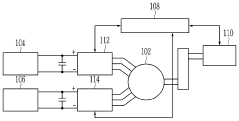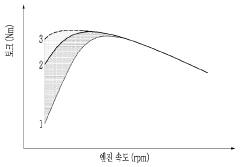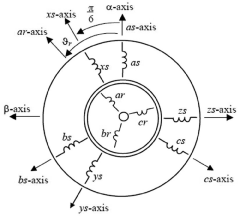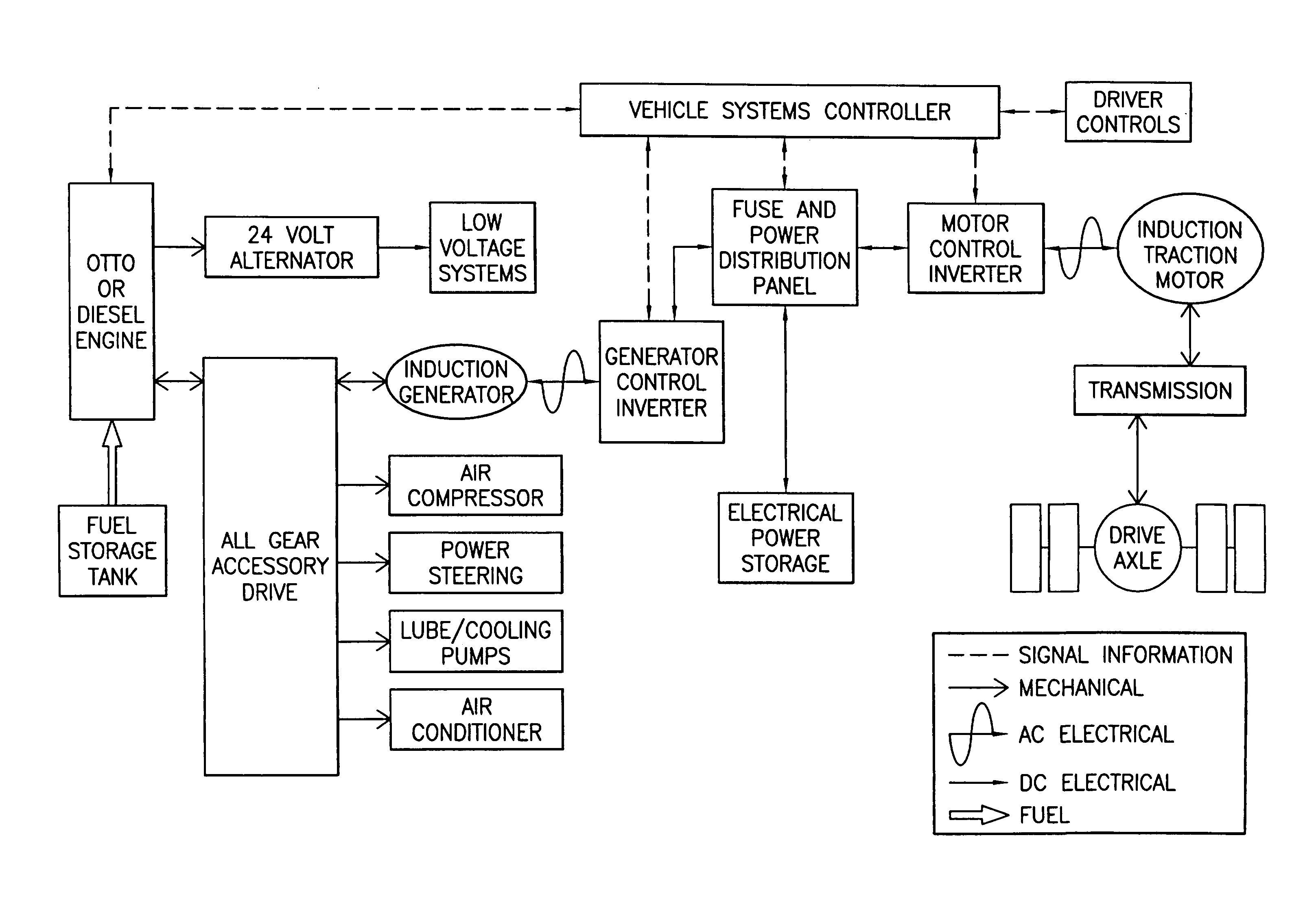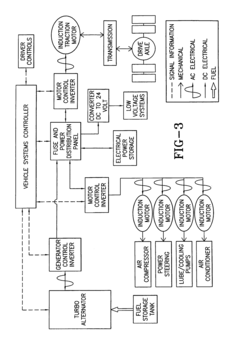The Dawn of HEV-Enhanced Urban Planning Solutions
AUG 14, 202510 MIN READ
Generate Your Research Report Instantly with AI Agent
Patsnap Eureka helps you evaluate technical feasibility & market potential.
HEV Urban Planning Evolution and Objectives
The evolution of Human-Environment-Vehicle (HEV) enhanced urban planning solutions marks a significant shift in how cities are designed and managed. This innovative approach integrates human needs, environmental considerations, and vehicular dynamics to create more sustainable, efficient, and livable urban spaces. The journey of HEV-enhanced urban planning began in the early 2000s, as cities worldwide grappled with increasing population densities, environmental degradation, and traffic congestion.
Initially, urban planners focused on isolated solutions, such as improving public transportation or implementing green spaces. However, the realization that these elements are interconnected led to the development of a more holistic approach. The HEV framework emerged as a response to this need for integration, aiming to balance human mobility, environmental sustainability, and vehicular efficiency.
As the concept evolved, technological advancements played a crucial role in shaping HEV-enhanced urban planning. The rise of smart city technologies, Internet of Things (IoT) devices, and big data analytics provided urban planners with unprecedented tools to monitor, analyze, and optimize urban systems. This technological revolution enabled real-time data collection on traffic patterns, air quality, and human movement, allowing for more informed decision-making in urban design.
The objectives of HEV-enhanced urban planning are multifaceted and ambitious. Primarily, it seeks to create cities that are more resilient, adaptable, and responsive to the needs of their inhabitants. This includes reducing traffic congestion, improving air quality, enhancing pedestrian safety, and promoting sustainable modes of transportation. Additionally, HEV solutions aim to optimize land use, reduce energy consumption, and minimize the urban heat island effect.
Another key objective is to foster social equity and inclusivity in urban spaces. By considering the diverse needs of different demographic groups, HEV-enhanced planning strives to create accessible and user-friendly environments for all city dwellers. This includes designing spaces that accommodate various modes of transportation, from walking and cycling to public transit and private vehicles.
Looking ahead, the future of HEV-enhanced urban planning is closely tied to emerging technologies such as autonomous vehicles, advanced sensor networks, and artificial intelligence. These innovations promise to further refine urban planning strategies, enabling more precise predictions of urban dynamics and facilitating adaptive, real-time adjustments to city infrastructure and services.
As cities continue to grow and evolve, the importance of HEV-enhanced urban planning solutions becomes increasingly apparent. By integrating human, environmental, and vehicular factors, this approach offers a pathway to creating more sustainable, efficient, and livable urban environments for future generations.
Initially, urban planners focused on isolated solutions, such as improving public transportation or implementing green spaces. However, the realization that these elements are interconnected led to the development of a more holistic approach. The HEV framework emerged as a response to this need for integration, aiming to balance human mobility, environmental sustainability, and vehicular efficiency.
As the concept evolved, technological advancements played a crucial role in shaping HEV-enhanced urban planning. The rise of smart city technologies, Internet of Things (IoT) devices, and big data analytics provided urban planners with unprecedented tools to monitor, analyze, and optimize urban systems. This technological revolution enabled real-time data collection on traffic patterns, air quality, and human movement, allowing for more informed decision-making in urban design.
The objectives of HEV-enhanced urban planning are multifaceted and ambitious. Primarily, it seeks to create cities that are more resilient, adaptable, and responsive to the needs of their inhabitants. This includes reducing traffic congestion, improving air quality, enhancing pedestrian safety, and promoting sustainable modes of transportation. Additionally, HEV solutions aim to optimize land use, reduce energy consumption, and minimize the urban heat island effect.
Another key objective is to foster social equity and inclusivity in urban spaces. By considering the diverse needs of different demographic groups, HEV-enhanced planning strives to create accessible and user-friendly environments for all city dwellers. This includes designing spaces that accommodate various modes of transportation, from walking and cycling to public transit and private vehicles.
Looking ahead, the future of HEV-enhanced urban planning is closely tied to emerging technologies such as autonomous vehicles, advanced sensor networks, and artificial intelligence. These innovations promise to further refine urban planning strategies, enabling more precise predictions of urban dynamics and facilitating adaptive, real-time adjustments to city infrastructure and services.
As cities continue to grow and evolve, the importance of HEV-enhanced urban planning solutions becomes increasingly apparent. By integrating human, environmental, and vehicular factors, this approach offers a pathway to creating more sustainable, efficient, and livable urban environments for future generations.
Market Demand for HEV-Enhanced Urban Solutions
The market demand for HEV-enhanced urban planning solutions has been steadily growing in recent years, driven by the increasing need for sustainable and efficient urban development. As cities worldwide grapple with challenges such as population growth, environmental concerns, and resource constraints, the integration of Human-Environment-Vehicle (HEV) systems into urban planning has emerged as a promising approach to address these issues.
One of the primary factors fueling the demand for HEV-enhanced solutions is the rapid urbanization occurring globally. With more people moving to cities, there is a pressing need for innovative approaches to manage urban spaces, transportation networks, and environmental resources effectively. HEV systems offer a holistic framework that considers the complex interactions between human activities, environmental factors, and vehicular systems, making them particularly attractive to urban planners and policymakers.
The transportation sector, in particular, has shown significant interest in HEV-enhanced solutions. As cities strive to reduce traffic congestion, improve air quality, and enhance mobility for residents, there is a growing demand for intelligent transportation systems that can optimize traffic flow, reduce emissions, and promote sustainable modes of transport. HEV-enhanced urban planning solutions can provide valuable insights into traffic patterns, pedestrian behavior, and environmental impacts, enabling more informed decision-making in transportation infrastructure development.
Environmental sustainability is another key driver of market demand for HEV-enhanced urban solutions. With increasing awareness of climate change and its impacts on urban areas, cities are seeking ways to reduce their carbon footprint and improve overall environmental quality. HEV systems can help urban planners design more energy-efficient buildings, optimize resource allocation, and create greener urban spaces that enhance the quality of life for residents.
The smart city movement has also contributed significantly to the growing demand for HEV-enhanced urban planning solutions. As cities invest in digital infrastructure and data-driven decision-making processes, there is a need for comprehensive systems that can integrate various urban data streams and provide actionable insights. HEV solutions offer the potential to create more responsive and adaptive urban environments that can better meet the changing needs of residents and businesses.
Furthermore, the COVID-19 pandemic has highlighted the importance of resilient urban planning and the need for flexible, adaptable urban spaces. This has led to increased interest in HEV-enhanced solutions that can help cities respond more effectively to future crises and changing urban dynamics. The ability to model and simulate various scenarios using HEV systems has become particularly valuable in this context, allowing urban planners to develop more robust and resilient urban strategies.
As the market for HEV-enhanced urban planning solutions continues to expand, there is also growing demand for skilled professionals who can implement and manage these complex systems. This has led to increased investment in education and training programs focused on HEV technologies and their applications in urban planning, further driving market growth in this sector.
One of the primary factors fueling the demand for HEV-enhanced solutions is the rapid urbanization occurring globally. With more people moving to cities, there is a pressing need for innovative approaches to manage urban spaces, transportation networks, and environmental resources effectively. HEV systems offer a holistic framework that considers the complex interactions between human activities, environmental factors, and vehicular systems, making them particularly attractive to urban planners and policymakers.
The transportation sector, in particular, has shown significant interest in HEV-enhanced solutions. As cities strive to reduce traffic congestion, improve air quality, and enhance mobility for residents, there is a growing demand for intelligent transportation systems that can optimize traffic flow, reduce emissions, and promote sustainable modes of transport. HEV-enhanced urban planning solutions can provide valuable insights into traffic patterns, pedestrian behavior, and environmental impacts, enabling more informed decision-making in transportation infrastructure development.
Environmental sustainability is another key driver of market demand for HEV-enhanced urban solutions. With increasing awareness of climate change and its impacts on urban areas, cities are seeking ways to reduce their carbon footprint and improve overall environmental quality. HEV systems can help urban planners design more energy-efficient buildings, optimize resource allocation, and create greener urban spaces that enhance the quality of life for residents.
The smart city movement has also contributed significantly to the growing demand for HEV-enhanced urban planning solutions. As cities invest in digital infrastructure and data-driven decision-making processes, there is a need for comprehensive systems that can integrate various urban data streams and provide actionable insights. HEV solutions offer the potential to create more responsive and adaptive urban environments that can better meet the changing needs of residents and businesses.
Furthermore, the COVID-19 pandemic has highlighted the importance of resilient urban planning and the need for flexible, adaptable urban spaces. This has led to increased interest in HEV-enhanced solutions that can help cities respond more effectively to future crises and changing urban dynamics. The ability to model and simulate various scenarios using HEV systems has become particularly valuable in this context, allowing urban planners to develop more robust and resilient urban strategies.
As the market for HEV-enhanced urban planning solutions continues to expand, there is also growing demand for skilled professionals who can implement and manage these complex systems. This has led to increased investment in education and training programs focused on HEV technologies and their applications in urban planning, further driving market growth in this sector.
Current HEV Integration Challenges in Urban Planning
The integration of Hybrid Electric Vehicles (HEVs) into urban planning presents significant challenges that cities must address to fully realize the potential benefits of this technology. One of the primary obstacles is the lack of adequate charging infrastructure. Many urban areas struggle to provide sufficient charging stations to support the growing number of HEVs, leading to range anxiety among users and potentially hindering adoption rates.
Another challenge lies in the power grid capacity and management. The increased electricity demand from HEVs can strain existing power distribution systems, particularly during peak hours. Urban planners must consider how to upgrade and optimize the grid to handle this additional load while maintaining stability and reliability.
Traffic management systems also face difficulties in accommodating HEVs. Current traffic flow models and signal timing algorithms may not account for the unique acceleration and deceleration patterns of hybrid vehicles, potentially leading to inefficiencies in traffic control and increased congestion.
The integration of HEVs into public transportation systems poses its own set of challenges. While hybrid buses and taxis offer environmental benefits, they require significant upfront investment and specialized maintenance facilities. Cities must carefully balance the costs and benefits of transitioning their public transit fleets to hybrid technology.
Parking infrastructure is another area of concern. HEVs often require dedicated parking spaces with charging capabilities, which can be challenging to implement in densely populated urban areas with limited space. This issue is particularly acute in older cities with established parking structures not designed with HEVs in mind.
Urban planners also face the challenge of equitable access to HEV technology. There is a risk of creating "green gentrification" where only affluent neighborhoods benefit from HEV infrastructure, potentially exacerbating existing socioeconomic disparities in transportation access and environmental quality.
The regulatory framework surrounding HEVs in urban environments is often inadequate or outdated. Cities struggle to develop and enforce policies that encourage HEV adoption while addressing concerns such as noise pollution, safety standards, and the allocation of public resources for HEV-related projects.
Lastly, the integration of HEVs into urban planning requires a shift in urban design philosophy. Cities must reimagine streetscapes, building codes, and zoning regulations to accommodate the unique needs of hybrid vehicles while maintaining the overall livability and functionality of urban spaces. This paradigm shift demands significant coordination among various stakeholders and may face resistance from established interests.
Another challenge lies in the power grid capacity and management. The increased electricity demand from HEVs can strain existing power distribution systems, particularly during peak hours. Urban planners must consider how to upgrade and optimize the grid to handle this additional load while maintaining stability and reliability.
Traffic management systems also face difficulties in accommodating HEVs. Current traffic flow models and signal timing algorithms may not account for the unique acceleration and deceleration patterns of hybrid vehicles, potentially leading to inefficiencies in traffic control and increased congestion.
The integration of HEVs into public transportation systems poses its own set of challenges. While hybrid buses and taxis offer environmental benefits, they require significant upfront investment and specialized maintenance facilities. Cities must carefully balance the costs and benefits of transitioning their public transit fleets to hybrid technology.
Parking infrastructure is another area of concern. HEVs often require dedicated parking spaces with charging capabilities, which can be challenging to implement in densely populated urban areas with limited space. This issue is particularly acute in older cities with established parking structures not designed with HEVs in mind.
Urban planners also face the challenge of equitable access to HEV technology. There is a risk of creating "green gentrification" where only affluent neighborhoods benefit from HEV infrastructure, potentially exacerbating existing socioeconomic disparities in transportation access and environmental quality.
The regulatory framework surrounding HEVs in urban environments is often inadequate or outdated. Cities struggle to develop and enforce policies that encourage HEV adoption while addressing concerns such as noise pollution, safety standards, and the allocation of public resources for HEV-related projects.
Lastly, the integration of HEVs into urban planning requires a shift in urban design philosophy. Cities must reimagine streetscapes, building codes, and zoning regulations to accommodate the unique needs of hybrid vehicles while maintaining the overall livability and functionality of urban spaces. This paradigm shift demands significant coordination among various stakeholders and may face resistance from established interests.
Existing HEV-Enhanced Urban Planning Approaches
01 Integration of human-vehicle-environment systems
HEV systems focus on the integration of human factors, vehicle dynamics, and environmental conditions to improve overall safety and performance in transportation. These systems consider the interactions between drivers, vehicles, and their surroundings to develop more efficient and safer driving experiences.- Integration of human-vehicle-environment systems: HEV systems focus on the integration of human factors, vehicle dynamics, and environmental conditions to improve overall safety and efficiency in transportation. These systems consider the interactions between drivers, vehicles, and their surroundings to develop advanced driver assistance technologies and autonomous driving capabilities.
- Environmental sensing and data processing: HEV systems incorporate various sensors and data processing techniques to gather and analyze information about the surrounding environment. This includes detecting road conditions, weather patterns, and potential hazards to enhance situational awareness and decision-making for both human drivers and autonomous vehicles.
- Human-machine interface and driver monitoring: Advanced human-machine interfaces are developed to improve communication between drivers and vehicles. These interfaces may include heads-up displays, haptic feedback systems, and voice controls. Additionally, driver monitoring systems are implemented to assess driver alertness, fatigue, and overall performance to enhance safety.
- Vehicle-to-everything (V2X) communication: HEV systems incorporate V2X communication technologies to enable vehicles to exchange information with other vehicles, infrastructure, and pedestrians. This connectivity enhances situational awareness, improves traffic flow, and supports cooperative driving scenarios for increased safety and efficiency.
- Simulation and modeling of HEV systems: Advanced simulation and modeling techniques are employed to study and optimize HEV systems. These tools allow researchers and engineers to analyze complex interactions between humans, vehicles, and the environment, enabling the development and testing of new technologies and strategies for improving transportation safety and efficiency.
02 Advanced driver assistance systems (ADAS)
HEV systems incorporate ADAS technologies to enhance driver awareness and vehicle control. These systems use sensors, cameras, and artificial intelligence to monitor the environment, detect potential hazards, and assist drivers in making informed decisions, ultimately improving road safety.Expand Specific Solutions03 Environmental monitoring and adaptation
HEV systems include technologies for monitoring and adapting to various environmental conditions. These systems can detect changes in weather, road conditions, and traffic patterns, allowing vehicles to adjust their performance and safety features accordingly.Expand Specific Solutions04 Human-machine interface optimization
HEV systems focus on improving the interaction between drivers and vehicles through optimized human-machine interfaces. This includes the development of intuitive dashboards, voice control systems, and haptic feedback mechanisms to enhance driver comfort and reduce cognitive load.Expand Specific Solutions05 Data analytics and predictive modeling
HEV systems utilize advanced data analytics and predictive modeling techniques to analyze driver behavior, vehicle performance, and environmental factors. This information is used to develop more accurate risk assessment models, improve vehicle design, and enhance overall transportation system efficiency.Expand Specific Solutions
Key Players in HEV-Urban Planning Integration
The development of HEV-Enhanced Urban Planning Solutions is in its early stages, with the market showing significant growth potential. The technology is still evolving, with varying levels of maturity across different applications. Key players like GM Global Technology Operations LLC, Ford Global Technologies LLC, and Nissan North America, Inc. are driving innovation in the automotive sector, while State Grid Corp. of China and State Power Economic Research Institute are focusing on energy infrastructure integration. Academic institutions such as Zhejiang University and Southeast University are contributing to research and development. The market is characterized by a mix of established automotive giants, energy companies, and emerging startups like Microgrid Labs, Inc., indicating a diverse and competitive landscape with ample room for technological advancements and market expansion.
GM Global Technology Operations LLC
Technical Solution: GM's HEV-enhanced urban planning solution integrates advanced vehicle-to-grid (V2G) technology with smart city infrastructure. Their system utilizes a fleet of hybrid electric vehicles (HEVs) as mobile energy storage units, capable of supplying power back to the grid during peak demand periods. GM's solution incorporates AI-driven predictive algorithms to optimize energy distribution based on traffic patterns, weather conditions, and urban energy consumption trends[1]. The company has also developed a proprietary software platform that enables real-time communication between HEVs and urban energy management systems, allowing for dynamic load balancing and improved grid stability[3].
Strengths: Extensive automotive expertise, established infrastructure for large-scale HEV production, and strong partnerships with urban planners. Weaknesses: Potential challenges in coordinating with diverse city governments and energy providers.
Ford Global Technologies LLC
Technical Solution: Ford's approach to HEV-enhanced urban planning focuses on creating a seamless integration between their hybrid vehicles and smart city ecosystems. Their solution incorporates advanced telematics and IoT connectivity to enable HEVs to serve as mobile sensor platforms, collecting real-time data on air quality, traffic congestion, and energy consumption patterns across urban areas[2]. Ford has developed a cloud-based analytics platform that processes this data to provide actionable insights for city planners and energy managers. Additionally, their HEVs are equipped with bidirectional charging capabilities, allowing them to participate in demand response programs and support grid stability during peak hours[4].
Strengths: Strong brand presence in the automotive market, extensive R&D capabilities in HEV technology. Weaknesses: May face challenges in scaling the solution across diverse urban environments with varying infrastructure readiness.
Core Innovations in HEV-Urban Synergy
Hybrid electric vehicle with double-stator electric motor powered by battery and supercapacitor
PatentPendingKR1020220149439A
Innovation
- A hybrid electric vehicle system utilizing a double stator electric motor powered by a lithium-ion battery and supercapacitor, where the motor is supplied by two independent power sources, with a motor controller managing power distribution based on driver demand, temperature, and energy storage.
Hybrid electric vehicle
PatentInactiveUS7252165B1
Innovation
- A power management system that allows wide voltage fluctuations without performance loss, using low inductance traction motors, high-voltage capable traction inverters, and ultracapacitors, with a controller that maintains voltage within set-points to optimize energy storage and delivery, eliminating the need for additional conversion devices.
Environmental Impact of HEV-Enhanced Urban Planning
The integration of Hybrid Electric Vehicles (HEVs) into urban planning solutions marks a significant shift towards more sustainable and environmentally friendly cities. As urban areas continue to grapple with the challenges of air pollution, noise pollution, and greenhouse gas emissions, HEV-enhanced urban planning offers a promising approach to mitigate these environmental concerns.
One of the primary environmental benefits of incorporating HEVs into urban planning is the reduction of air pollution. HEVs emit significantly fewer pollutants compared to conventional internal combustion engine vehicles, particularly in urban environments where stop-and-go traffic is common. By promoting the use of HEVs through dedicated lanes, charging infrastructure, and incentive programs, cities can substantially improve air quality, leading to better public health outcomes and reduced healthcare costs associated with respiratory illnesses.
Furthermore, HEV-enhanced urban planning contributes to the reduction of greenhouse gas emissions, a critical factor in combating climate change. As cities strive to meet their carbon reduction targets, the widespread adoption of HEVs can play a crucial role in decreasing the overall carbon footprint of urban transportation systems. This aligns with global efforts to transition towards low-carbon economies and helps cities meet their sustainability goals.
Noise pollution, another significant environmental concern in urban areas, can also be addressed through HEV-enhanced urban planning. The quieter operation of HEVs, especially at low speeds typical in city centers, can contribute to a more pleasant urban soundscape. This reduction in noise pollution not only improves the quality of life for residents but also has positive implications for urban wildlife and ecosystems.
The implementation of HEV-friendly infrastructure, such as charging stations and dedicated parking spaces, can also have indirect environmental benefits. By strategically placing these facilities, urban planners can encourage the use of public transportation and promote mixed-use development, potentially reducing overall vehicle miles traveled and associated emissions.
Moreover, HEV-enhanced urban planning can catalyze broader environmental initiatives. The visible presence of HEV infrastructure and vehicles can raise public awareness about environmental issues and encourage more sustainable lifestyle choices among urban residents. This ripple effect can extend beyond transportation, influencing decisions in energy consumption, waste management, and other areas of daily life.
However, it is important to consider the full lifecycle environmental impact of HEVs, including battery production and disposal. Urban planners must work closely with environmental experts to ensure that the benefits of HEV adoption are not offset by negative impacts in other areas. This holistic approach to environmental assessment is crucial for the long-term sustainability of HEV-enhanced urban planning solutions.
One of the primary environmental benefits of incorporating HEVs into urban planning is the reduction of air pollution. HEVs emit significantly fewer pollutants compared to conventional internal combustion engine vehicles, particularly in urban environments where stop-and-go traffic is common. By promoting the use of HEVs through dedicated lanes, charging infrastructure, and incentive programs, cities can substantially improve air quality, leading to better public health outcomes and reduced healthcare costs associated with respiratory illnesses.
Furthermore, HEV-enhanced urban planning contributes to the reduction of greenhouse gas emissions, a critical factor in combating climate change. As cities strive to meet their carbon reduction targets, the widespread adoption of HEVs can play a crucial role in decreasing the overall carbon footprint of urban transportation systems. This aligns with global efforts to transition towards low-carbon economies and helps cities meet their sustainability goals.
Noise pollution, another significant environmental concern in urban areas, can also be addressed through HEV-enhanced urban planning. The quieter operation of HEVs, especially at low speeds typical in city centers, can contribute to a more pleasant urban soundscape. This reduction in noise pollution not only improves the quality of life for residents but also has positive implications for urban wildlife and ecosystems.
The implementation of HEV-friendly infrastructure, such as charging stations and dedicated parking spaces, can also have indirect environmental benefits. By strategically placing these facilities, urban planners can encourage the use of public transportation and promote mixed-use development, potentially reducing overall vehicle miles traveled and associated emissions.
Moreover, HEV-enhanced urban planning can catalyze broader environmental initiatives. The visible presence of HEV infrastructure and vehicles can raise public awareness about environmental issues and encourage more sustainable lifestyle choices among urban residents. This ripple effect can extend beyond transportation, influencing decisions in energy consumption, waste management, and other areas of daily life.
However, it is important to consider the full lifecycle environmental impact of HEVs, including battery production and disposal. Urban planners must work closely with environmental experts to ensure that the benefits of HEV adoption are not offset by negative impacts in other areas. This holistic approach to environmental assessment is crucial for the long-term sustainability of HEV-enhanced urban planning solutions.
Policy Framework for HEV-Integrated Urban Development
The integration of Hybrid Electric Vehicles (HEVs) into urban planning requires a comprehensive policy framework to ensure successful implementation and maximize benefits. This framework should address various aspects of urban development, including transportation infrastructure, energy systems, environmental regulations, and economic incentives.
At the core of this policy framework is the need for clear guidelines on the integration of HEV charging infrastructure into urban landscapes. Cities must develop zoning regulations that mandate the inclusion of charging stations in new residential and commercial developments. These regulations should specify the minimum number of charging points required based on the size and type of development, ensuring adequate coverage across urban areas.
Transportation policies play a crucial role in promoting HEV adoption. Cities should implement preferential lane access for HEVs, similar to existing high-occupancy vehicle (HOV) lanes. Additionally, reduced parking fees or dedicated parking spaces for HEVs in city centers can incentivize their use. Public transportation systems should also be encouraged to transition to HEV fleets, setting an example for private vehicle owners.
Energy policies must be adapted to support the increased electricity demand from HEVs. This includes incentives for renewable energy integration, smart grid development, and time-of-use pricing to encourage off-peak charging. Collaboration between urban planners, utility companies, and HEV manufacturers is essential to ensure a robust and efficient energy infrastructure.
Environmental policies should be updated to reflect the potential benefits of HEVs in reducing urban air pollution and greenhouse gas emissions. This may include stricter emissions standards for conventional vehicles and financial incentives for HEV purchases. Cities should also consider implementing low-emission zones where only electric or hybrid vehicles are permitted, gradually expanding these areas over time.
Economic policies are crucial for driving HEV adoption. Tax incentives, rebates, and grants for HEV purchases can make these vehicles more accessible to a broader range of consumers. Additionally, policies supporting the development of a local HEV manufacturing and service industry can create jobs and stimulate economic growth.
Education and awareness programs should be incorporated into the policy framework. These initiatives can inform citizens about the benefits of HEVs, available incentives, and proper usage of charging infrastructure. Public-private partnerships can be leveraged to fund and implement these programs effectively.
Lastly, the policy framework must include mechanisms for regular review and adaptation. As HEV technology evolves and adoption rates change, policies should be flexible enough to accommodate new developments and address emerging challenges. This may involve establishing a dedicated task force or committee to monitor progress and recommend policy adjustments as needed.
At the core of this policy framework is the need for clear guidelines on the integration of HEV charging infrastructure into urban landscapes. Cities must develop zoning regulations that mandate the inclusion of charging stations in new residential and commercial developments. These regulations should specify the minimum number of charging points required based on the size and type of development, ensuring adequate coverage across urban areas.
Transportation policies play a crucial role in promoting HEV adoption. Cities should implement preferential lane access for HEVs, similar to existing high-occupancy vehicle (HOV) lanes. Additionally, reduced parking fees or dedicated parking spaces for HEVs in city centers can incentivize their use. Public transportation systems should also be encouraged to transition to HEV fleets, setting an example for private vehicle owners.
Energy policies must be adapted to support the increased electricity demand from HEVs. This includes incentives for renewable energy integration, smart grid development, and time-of-use pricing to encourage off-peak charging. Collaboration between urban planners, utility companies, and HEV manufacturers is essential to ensure a robust and efficient energy infrastructure.
Environmental policies should be updated to reflect the potential benefits of HEVs in reducing urban air pollution and greenhouse gas emissions. This may include stricter emissions standards for conventional vehicles and financial incentives for HEV purchases. Cities should also consider implementing low-emission zones where only electric or hybrid vehicles are permitted, gradually expanding these areas over time.
Economic policies are crucial for driving HEV adoption. Tax incentives, rebates, and grants for HEV purchases can make these vehicles more accessible to a broader range of consumers. Additionally, policies supporting the development of a local HEV manufacturing and service industry can create jobs and stimulate economic growth.
Education and awareness programs should be incorporated into the policy framework. These initiatives can inform citizens about the benefits of HEVs, available incentives, and proper usage of charging infrastructure. Public-private partnerships can be leveraged to fund and implement these programs effectively.
Lastly, the policy framework must include mechanisms for regular review and adaptation. As HEV technology evolves and adoption rates change, policies should be flexible enough to accommodate new developments and address emerging challenges. This may involve establishing a dedicated task force or committee to monitor progress and recommend policy adjustments as needed.
Unlock deeper insights with Patsnap Eureka Quick Research — get a full tech report to explore trends and direct your research. Try now!
Generate Your Research Report Instantly with AI Agent
Supercharge your innovation with Patsnap Eureka AI Agent Platform!
